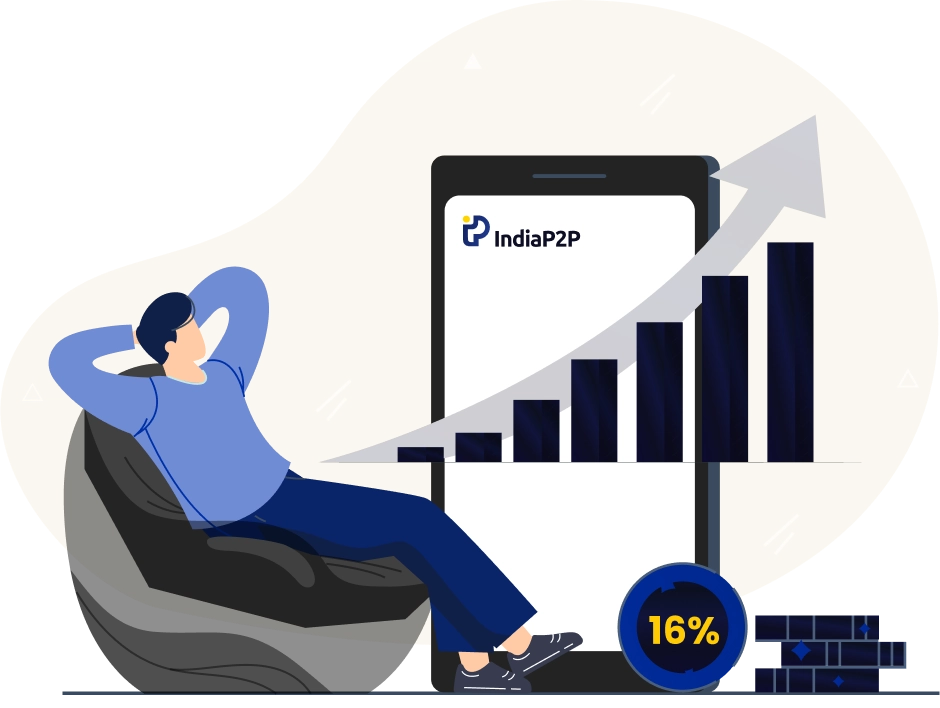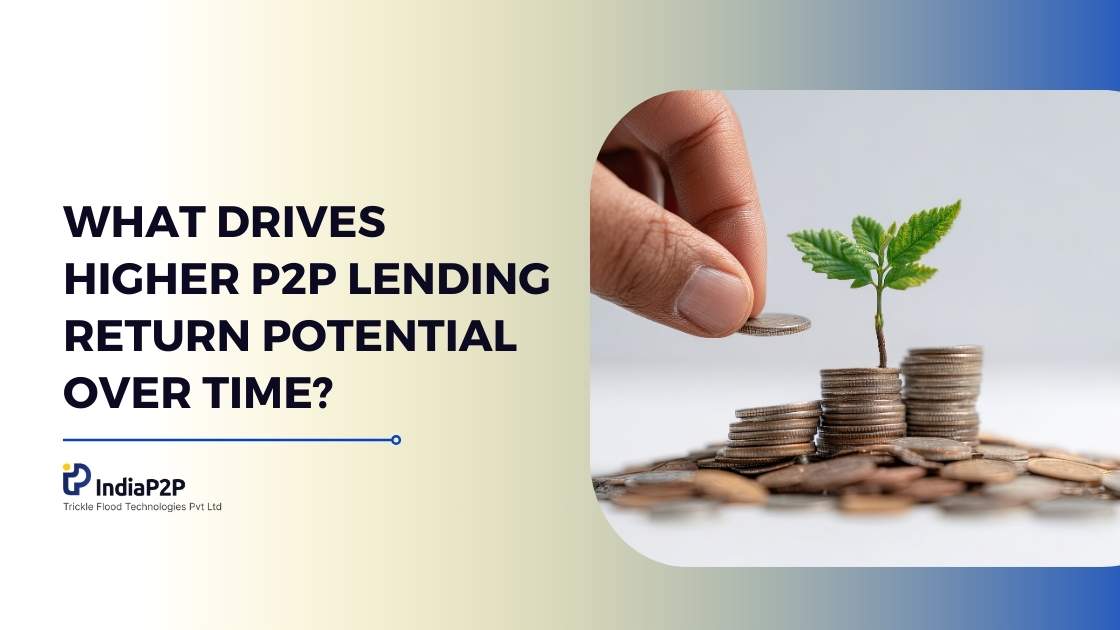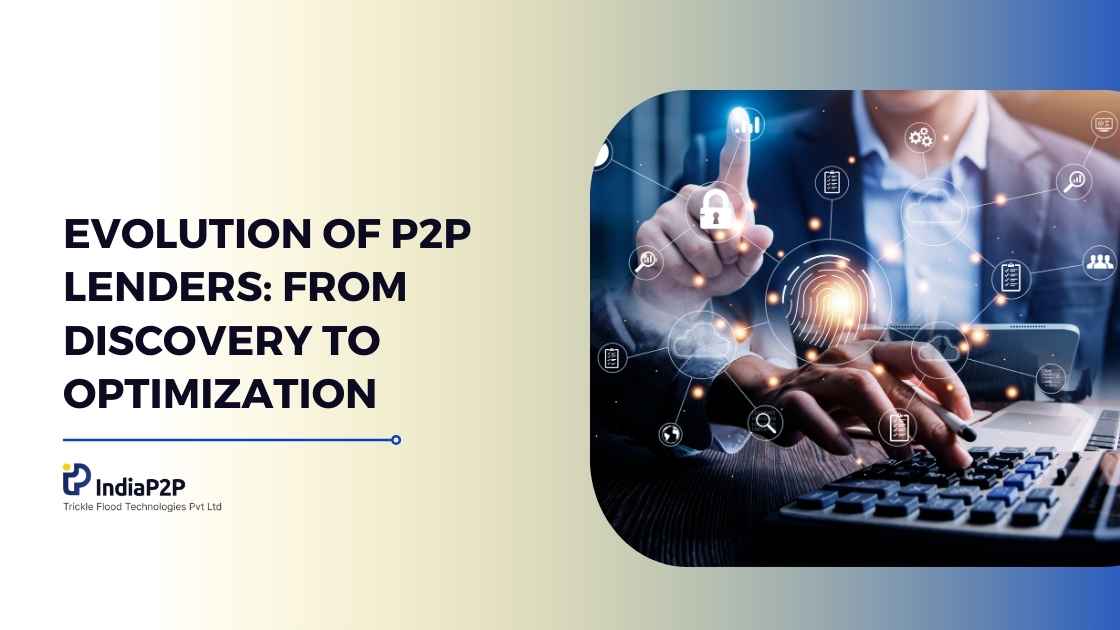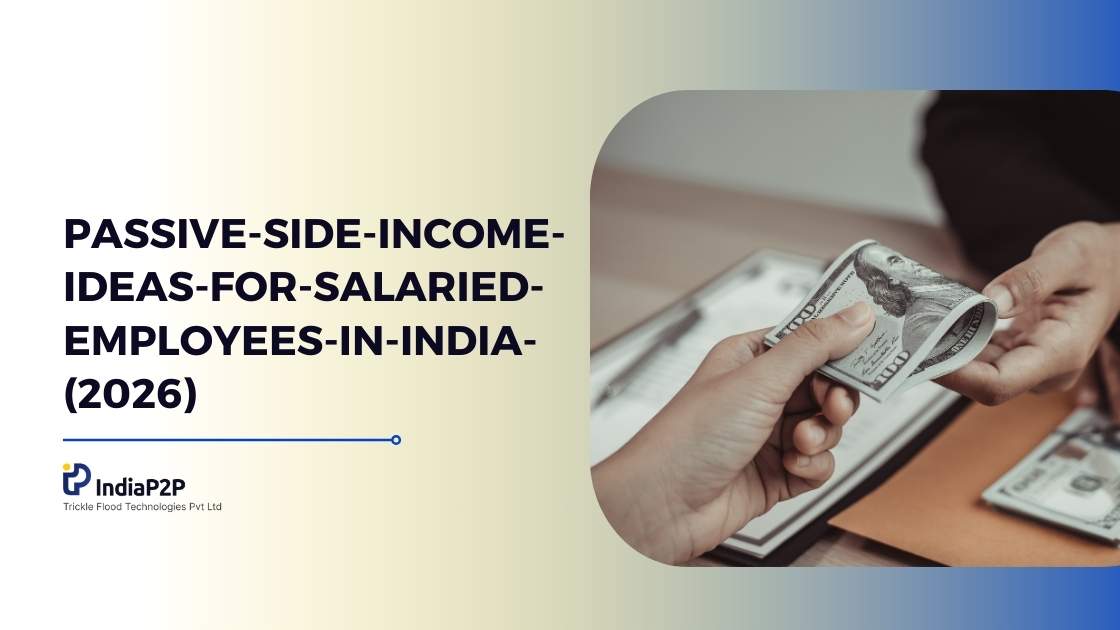How Does Indiap2p Offer a High Return Investment Option with Low Risk?

IndiaP2P’s first-of-its-kind return-risk profile is the result of a unique yet large arbitrage opportunity that exists in the debt markets of emerging economies such as India.
First, let’s recap how the equity and debt markets differ.
While retail investors have had access to equity investments for long, debt has been gaining in popularity over the last decade.
Read on…
Understanding Equity Market
We all have come across the term debt and equity quite often. And while we may use them in the same breath, they are quite different. Equity is the process of raising capital by selling a portion of shares from the business.
For example, you receive a certain amount of capital infusion in your company in the form of equity. This means that you don't have to repay the amount later. However, the investor receives a portion of the shares. Hence, they will receive profits in sync with their share ownership.
Equity finance can be availed through multiple sources such as venture capitalists, angel investors, private equity firms, and other crowdfunding platforms. The more common version is buying stocks of publicly listed companies.
Understanding Debt Financing
On the other hand, debt financing refers to borrowing a lump sum amount. This amount is then paid back over time along with an agreed interest rate. Business loans, commercial mortgages, asset finance, and personal loans among others are key types of debt financing.
The concept is simple. If you or your organization takes a loan from a bank, you do so with a promise of paying it later in addition to interest. If you don’t you will be monetarily and legally penalized.
So, how is the interest rate determined in IndiaP2P?
When you invest in IndiaP2P, you earn interest on the loans that you fund. Let’s understand how this interest rate is determined.
Several factors determine the interest rate - such as tenor, credit risk, collateral, macro factors, and capital journey. Let us look at each of these factors separately.
Tenor:
Interest rate and tenor are directly related to each other. The shorter the tenor of the loan, the lower the risk. This is because the ability of the borrower to repay the loan is less likely to change. Hence, the interest rate turns out to be low.
It’s important to note that by shorter tenor we mean 1 or a few years. Very short-tenor loans such as in days or months (BNPL etc.) have a higher risk as these loans are often taken for consumption or out of distress.
Credit risk:
Credit scores determine credit risk based on past loan repayments, income, etc., and are considered when setting interest rates. The borrower with a better score gets to avail loan at a lower interest rate as their estimated risk of default is lower.
Collateral:
Similarly, the nature of the loan also decides the rate of interest. When a loan is secured against collateral, the default risk decreases and hence the risk premium is charged lower. Therefore, the rate of borrowing was reduced too.
Macro changes:
Interest rates are determined by central banks (RBI) to actively commit to maintaining target interest rates. This is done by directly intervening in the open market through open market operations and buying or selling treasury securities to influence rates in the short term.
It is influenced by prevailing macroeconomic factors like inflation, trade deficit, etc. These changes affect all loan/borrower types.
Capital Journey:
In India (and many other countries), capital (which is used to extend credit) is concentrated around large banks or financial institutions while credit seekers (borrowers) come in a wide variety of formats and sizes – large corporates, small businesses, student loan seekers, personal loans, etc.
Since capital is indeed concentrated, the lenders (banks/large NBFCs/others) find it convenient to give our larger loans that typically to go large corporates. This helps them build a big lending book with a small number of transactions i.e. lesser effort since staff overheads etc. are involved.
These large lenders also want to build a book along with other loan types (better diversification/lesser risk) but are unwilling to process smaller ticket loans. To solve this, large lenders lend to smaller lenders who further lend to even more specialized and smaller lenders, and eventually to the end borrower who may be seeking a ₹1 lakh loan.
Because capital flows through so many institutions before it reaches the end borrower it becomes expensive i.e. high yield or high-interest cost simply because the processing/opex cost of each intermediary institution is added along the way.
To put it simply, smaller, fragmented borrowers tend to be disadvantaged and pay higher interest costs not because they are higher risk – many have great credit scores, available collateral, and more, but because capital reaches them after passing through many intermediaries.
This cost of intermediation is often as much as 10% making it a great arbitrage opportunity when disrupted and this is exactly what IndiaP2P does.
For instance, you deposit a sum of ₹1 lakh in your account. The bank offers you an interest rate of 4% per annum. Now, the same amount will be loaned out to a key non-banking financial institution (NBFC) at a rate of 12% interest by your bank.
The large NBFC will now lend it to a smaller NBFC at a rate of 16%. A small, upcoming business availing a loan from this NBFC will have to pay an interest of 20%-25%. Notably, here the risk is not high as the risk premium charged by the last-mile lender is not much.
IndiaP2P’s product creation bypasses these intermediaries and delivers interest earnings to retail investors which would otherwise be lost to intermediaries i.e. we do not go after high-risk/low credit score borrowers to deliver high returns to you. We only solicit loans from those borrower segments where there is high arbitrage with low borrower risk vis a vis credit score and tenor.
We have invested in and built a first-in-the-industry technology stack and physical networks that directly link retail investors with a high-quality, high-credit score, high-yield loans i.e. delivering returns through real arbitrage without increasing risk.
And, there’s more….
There are other scenarios also when a high return investment can have a lesser or similar risk to other lower-risk opportunities.
For instance, corporate bonds are rated from AAA to default by credit rating agencies. AAA happens to be the highest rating. Most companies and mutual funds invest in AAA bonds due to regulatory and internal mandates.
Hence, AAA-rated bonds have a higher demand compared to supply. Therefore, the yield is considerably less than slightly lower-rated bonds.
Insurers and Provident Funds also prefer to invest in high-rated investment papers. Moreover, the insurance regulator does not allow investment below A-rated instruments.
Hence, the demand drops automatically for below-A-rated issuers (companies) even though the risk factor doesn’t go up. As the pool of capital these companies can access becomes substantially less, they have to borrow at higher rates.
Conclusion
Technology today is disrupting many industries and IndiaP2P aims to disrupt the high-yield debt markets by enabling retail investors to participate in a unique and large arbitrage opportunity. Your high returns with IndiaP2P come from technology-led market efficiency as opposed to taking more risk.
Along with access to this arbitrage (hence the high returns at limited risk), we also take additional risk-mitigation steps such as deploying your investment into bundles of diversified loan fractions thus spreading your investment over diverse, uncorrelated borrowers and limiting exposure to any one or one type.




